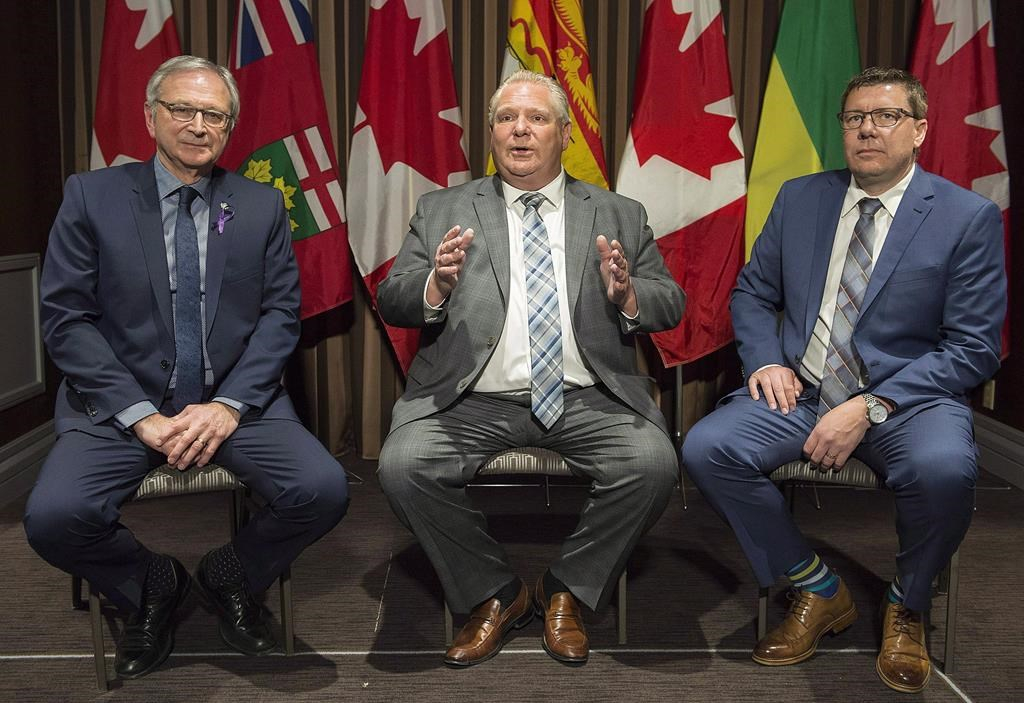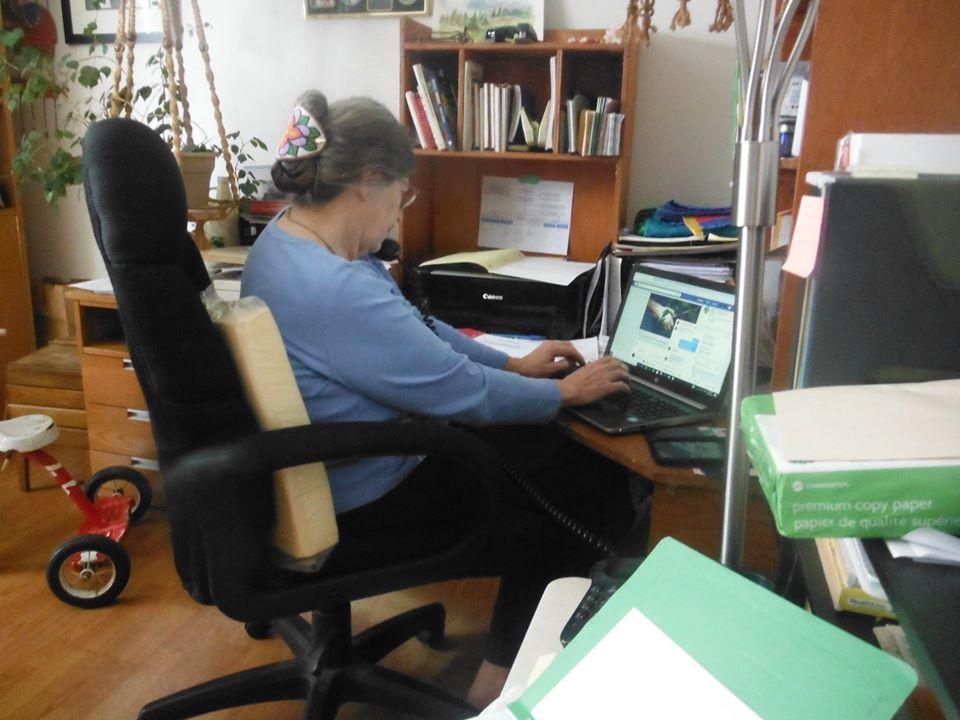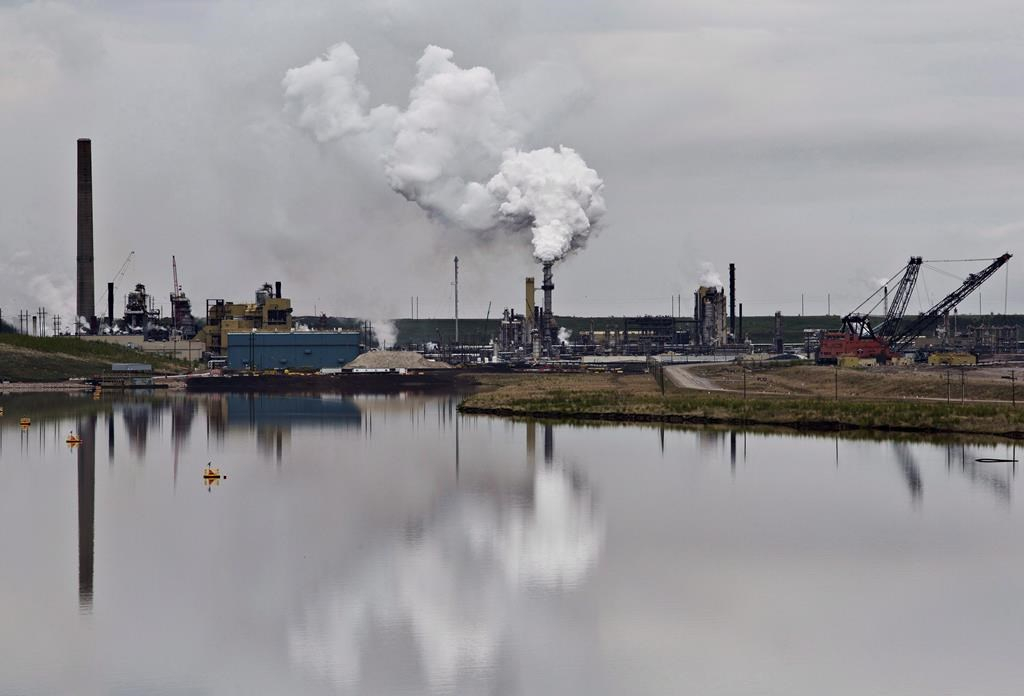Support strong Canadian climate journalism for 2025
Premier Scott Moe has sent a letter to Prime Minister Justin Trudeau outlining Saskatchewan’s priorities ahead of the federal throne speech on Sept. 23. In it, he is asking Trudeau to support nuclear development in the province.
Moe wants the development of small modular nuclear reactors, also known as SMRs, in Saskatchewan to be part of Trudeau’s green agenda.
“While all Canadians would support a commitment to environmental protection and sustainability, there is significant concern that your “ambitious green agenda” is code for shutting down our energy industry, a major driver of Canada’s economy,” Moe said in his letter to Trudeau.
Moe wrote there is more that can be done to address climate change in partnership with provincial governments through nuclear research.
The Liberal government may drop the "ambitious green agenda" from the throne speech for a smaller green plan, according to a Global News report.

In December, Moe signed a memorandum of understanding with the premiers of Ontario and New Brunswick to work together on further developing the nuclear industry.
“Together with the provinces of Ontario, New Brunswick and soon Alberta, our government is prioritizing the research and deployment of nuclear small modular reactors in order to provide zero-emission power over the coming years,” Moe wrote in his letter to Trudeau.
“A federal commitment to support this initiative would be an important step in advancing the deployment of this technology.”
In his letter, the premier also focused on support for the oil and gas sectors, and pushed for pausing the carbon tax.
The Supreme Court of Canada will hear arguments on the federal carbon tax at the same time as the throne speech is delivered.

“I would hope that your government will provide a strong commitment to ensuring the future of a sustainable gas and oil sector in the upcoming throne speech,” Moe wrote.
“Importantly, addressing these priorities would also be significant in addressing the sentiments of western alienation that exists amongst many Saskatchewan residents and western Canadians,” Moe wrote.
But western Canadians don’t all see eye-to-eye on the deployment of nuclear reactors, even small ones.
Committee for Future Generations outreach co-ordinator Candyce Paul of La Plonge at the English River First Nation earlier told Canada’s National Observer that while they haven’t been consulted on any aspects of the plan, all signs point to the north as a site for the reactors.
On Tuesday, Paul called it ironic that Moe spoke of western alienation from Ottawa when many in the north feel the same way about Regina.
“Trudeau, please represent the people of northern Saskatchewan because Scott Moe does not,” Paul said.

Paul’s group fights nuclear waste storage in Saskatchewan and was instrumental in stopping a proposal that considered Beauval, Pinehouse and Creighton as storage locations in 2011.
“When we informed the communities that they were looking at planning to bury nuclear waste up here in 2011, once they learned what that entailed, everybody said, 'No way.' Eighty per cent of the people in the north said, 'No way, absolutely not.' It didn’t matter if they worked for Cameco or the other mines. They said, if it comes here, we will not support it coming here,” Paul said in an interview last month.
Canada’s leading nuclear industry players announced an interprovincial corporate partnership in August to support the launch of a research centre that will work on developing SMRs for use in Saskatchewan.
Saskatoon-based Cameco is the world’s biggest uranium producer and has long supplied fuel to Bruce Power, Ontario’s largest nuclear power company.
SMRs are designed to produce smaller amounts of electricity, between 50 and 300 megawatts, without the emissions usually associated with power generation.

Moe said in August that nuclear power is a critical part of the solution to climate change and will help rural and remote communities as a new base for the electrical grid.
“We are not going to be able to deal with things like climate change or very broad issues if we are not going to commit to integrating nuclear power into our systems. It has to be part of the solutions. We simply are unable to get the job done without it,” Moe said.
Paul said the intent behind using SMRs is anything but green and that the real goal is to prop up Saskatchewan’s ailing uranium industry and develop oilsands in the northwest.
“He’s put it right in the letter. His fear is they’re going to put out a green policy that will hurt the oil and gas sector,” Paul said.
“They’ve been looking for a way to bring the tar sands to northern Saskatchewan. We all know the mess that makes. Using small modular reactors is not lessening the carbon impact.”

August's interprovincial agreement came on the heels of Saskatchewan announcing a nuclear secretariat in June to make way for reactors.
The secretariat is mandated to develop and execute a strategic plan for the use of “clean-energy small modular reactors” in the province.
“I’m not feeling confident in this at all, Canadian nuclear laboratories saying that it would only be a small-radius exclusion zone. Well that’s our territory. That’s our land, our waters, our wildlife,” Paul said in August.
She said that waste generated from SMRs would become a dangerous part of the transportation system “even if they do remove it.”
“It will be big, big transports of highly radioactive stuff, driving down the roads as an easy dirty bomb. You’d be driving down the road (behind a nuclear waste transport vehicle) and not know you’re following it,” Paul said.

She said in August that communities around Canada, and especially in the Far North, have long been pitched as sites for SMR development and nuclear waste storage, but have refused.
“None of our people are going to get trained for operating these. It supports people from other places. It doesn't really support us,” Paul said.
Paul said on Tuesday that SMRs under 200 megawatts are currently excluded from environmental impact assessments, which means a lack of opportunity for public input.
She also said that interconnected water systems in the north would mean pollution would travel quickly into the ecosystem if there was a mishap at a reactor site.

Brooke Dobni, professor of strategy at the University of Saskatchewan’s Edwards School of Business, told Canada’s National Observer in August that any development of small reactors would take a long time.
“It could be a good thing, but on the other hand, it might have some pitfalls. Those talks take years,” Dobni said.
He said nuclear reactors face bigger challenges that have to be addressed before they can go ahead, such as public support for protecting the environment, the high cost of building infrastructure, and containing nuclear fallout and radiation.
“Anything nuclear is 25 years out if you’re talking about small reactors, those kinds of things to power up the city,” Dobni said.
“That technology is a long ways away and a lot of it’s going to depend on public opinion.
"The court for that is the court of public opinion, whether or not people want that in their own backyard, and that’s the whole issue anywhere in the world.”

On Tuesday, Paul asked the federal government to invest in critical infrastructure instead.
“We need money spent in a serious way. Not on small modular reactors that could happen in 25 years. We need things now. To bring us up to the standards in our health system, we need health facilities. The public doesn't want the government subsidizing industries that are about to go bust. It’s a waste of money,” Paul said.
“We have extreme needs that aren’t being met by industry and never will be met by industry. Trudeau, put the money where you want to make some real reconciliation happen.”
Michael Bramadat-Willcock/Local Journalism Initiative/Canada's National Observer







Comments
1. People who know about Chernobyl, or Three Mile Island, or Windscale/Selafield (Britain) know that nuclear power stations are dangerous.
2. Probably the best place to store used fuel from nuclear power stations is in the basement of 24 Sussex Drive. The Prime Minister can keep a close eye on it.
Nuclear power is slow & expensive to build, generates the most toxic materials known and is not required for meeting IPCC targets. There is no expectation that SMNRs won't perpetuate that dismal legacy. No thanks.